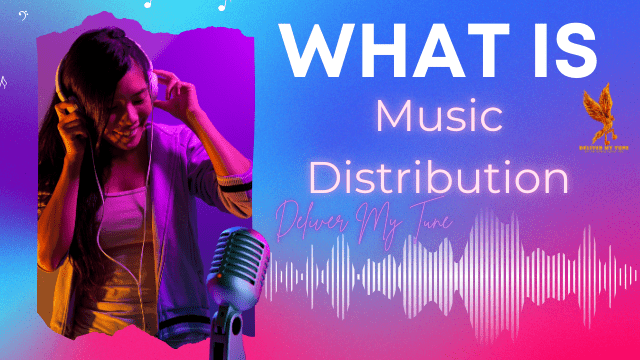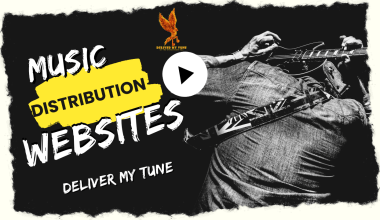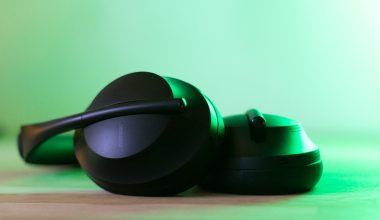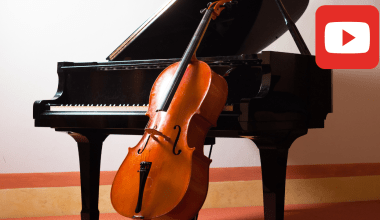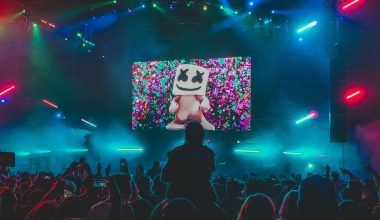In today’s digital age, music distribution has become one of the most critical steps for any artist looking to reach listeners worldwide. But what exactly is music distribution? Simply put, music distribution is the process that gets your music from your studio to listeners through various digital streaming platforms (DSPs) like Spotify, Apple Music, and Amazon Music.
Historically, music distribution meant getting physical records, CDs, or tapes into stores. However, with the rise of the internet and music streaming, distribution has shifted to digital formats. Now, artists distribute their songs digitally, making it accessible to anyone with internet access, ensuring your music can reach global audiences instantly.
Why is Music Distribution Important?
Music distribution allows artists to reach their fans and helps in creating new listeners. Without proper distribution, even the best music may go unheard. For independent artists especially, effective music distribution ensures that they’re not only reaching their core audience but are also exposed to new listeners across the world. Distribution also simplifies the monetization process; platforms pay artists royalties based on plays, helping musicians turn their passion into income.
Types of Music Distribution
- Physical Distribution
Before the internet, physical distribution was the only way to get music to audiences. CDs, vinyl records, and cassette tapes were manufactured and then sent to stores for purchase. Physical distribution still exists, although it’s now mainly for fans who prefer collecting vinyl or CDs. - Digital Distribution
Digital music distribution is the process of getting music on streaming platforms like Spotify, Apple Music, and Deezer. Through digital distribution, artists have the chance to reach millions of listeners worldwide without needing a record label. - Independent Distribution
Many independent artists choose to handle distribution on their own or work with independent distributors. This route often gives artists more control over their music and allows them to keep a larger percentage of their royalties. - Label Distribution
Record labels also play a role in music distribution, especially for artists who sign deals with them. Labels handle distribution, promotion, and often advance production costs in exchange for a cut of the revenue.
How Does Music Distribution Work?
The music distribution process typically involves these steps:
- Creating and Finalizing Your Music
Before distributing, artists need to ensure that their music is fully ready for release, which includes recording, mixing, and mastering. - Selecting a Distribution Partner
Several companies specialize in distributing music digitally, such as Deliver My Tune, DistroKid, TuneCore, and CD Baby. These distributors handle getting your music on all major streaming platforms for a fee or commission. - Uploading Your Music
Artists upload their music files and provide essential information like song titles, album name, genre, and release date. - Distribution to DSPs
Once the music is uploaded, the distributor sends it to all major DSPs, where listeners can access and stream it. - Earning Royalties
Streaming platforms pay artists royalties based on the number of plays or streams. Each platform has different payment rates, which are deposited into the artist’s account.
Choosing the Right Distributor
Selecting a distributor can be overwhelming due to the variety of options available. Here are some factors to consider:
- Cost
Some distributors charge a flat fee, while others take a percentage of royalties. Understanding the cost structure will help in making an informed decision. - Service Offerings
Some distributors offer additional services like marketing, playlist pitching, and social media management. For example, platforms like Deliver My Tune offer distribution along with AI mastering, which enhances sound quality, and social media management services to boost an artist’s online presence. - User Interface and Experience
Look for a distributor with a user-friendly interface. An intuitive dashboard can make it easier to upload music, monitor streams, and access earnings. - Support and Customer Service
Especially for independent artists, having access to responsive customer support is essential. Some distributors provide support through phone, chat, or email.
Top Music Distribution Platforms for Independent Artists
Some of the top platforms used by independent artists include:
- Deliver My Tune
Known for its comprehensive offerings, Deliver My Tune not only distributes music but also provides additional services such as social media management and AI mastering. - DistroKid
DistroKid is known for its flat fee structure, which allows artists to upload unlimited music for a single yearly fee. It’s a popular choice among independent artists. - TuneCore
TuneCore also offers distribution and takes a commission on royalties. They have a variety of additional services for artists. - CD Baby
CD Baby charges an upfront fee and takes a percentage of royalties but offers extensive customer support and additional tools for artists.
The Role of Streaming Platforms in Music Distribution
Streaming platforms have revolutionized music distribution. Instead of purchasing individual tracks or albums, listeners can now stream millions of songs on demand. Platforms like Spotify, Apple Music, Amazon Music, and YouTube Music make it possible for artists to have a wider reach and increase their chances of building a global audience.
Steps to Distribute Your Music Successfully
- Build a Marketing Strategy
Before releasing, plan your marketing strategy. This could include social media promotion, paid ads, and reaching out to playlist curators. - Create a Strong Release Plan
Plan your release date and avoid competing with major releases if possible. Building anticipation through social media and pre-release teasers can create excitement among fans. - Optimize Your Profile on Streaming Platforms
Platforms like Spotify and Apple Music allow artists to customize their profiles. Update your bio, add photos, and ensure your social media links are available. - Leverage Playlists
Getting your music on playlists can boost visibility and increase streams. Reach out to playlist curators or use distribution platforms that offer playlist pitching.
How Music Distribution Helps Artists Monetize
Monetizing music is an essential aspect of distribution. Artists receive royalties every time their music is streamed. Here’s how it works:
- Performance Royalties
Streaming platforms pay royalties based on performance, i.e., the number of streams your track receives. - Mechanical Royalties
Some streaming platforms also pay mechanical royalties, especially in the case of downloaded tracks. - Sync Royalties
If your song is used in a film, ad, or video game, you’re entitled to sync royalties. Some distributors offer sync licensing opportunities for artists.
Why Independent Artists Should Consider Music Distribution Services
Independent artists may wonder if music distribution is worth it, especially if they have limited funds. However, with the right distribution partner, artists can access an array of benefits, including:
- Global Reach
With music distribution, independent artists can reach listeners worldwide. Distribution services allow your music to be heard across different continents, broadening your fanbase. - Professional Quality
Many distribution platforms, like Deliver My Tune, offer AI mastering and professional quality services that ensure your music sounds top-notch. - Control and Flexibility
Artists retain control over their music, including setting release dates and managing profiles. - Higher Royalties
Independent distribution often means fewer middlemen, which translates to more money for the artist. - Analytics and Insights
Distribution platforms provide insights into listener demographics, allowing artists to tailor their marketing strategies accordingly.
Challenges in Music Distribution
Despite its benefits, music distribution isn’t without challenges:
- Market Saturation
With thousands of new tracks uploaded daily, standing out on streaming platforms can be difficult. - Earnings and Revenue
Streaming royalties can be relatively low. Artists need high stream counts to make significant income. - Copyright Issues
Mismanagement of copyrights or distributing unlicensed music can lead to legal problems. Ensure your music is entirely original or properly licensed. - Difficulty in Playlist Inclusion
Playlists drive a lot of streams, but getting placed on popular playlists can be challenging. Most playlists have high standards and only feature select tracks.
Final Thoughts: Embracing Music Distribution
Understanding what is music distribution is essential for any artist aiming to succeed in today’s competitive music industry. Whether you’re an independent artist or signed to a label, music distribution provides the pathway to reach fans and earn income. By carefully choosing the right distribution partner, developing a solid release strategy, and optimizing profiles on streaming platforms, artists can make the most of their music distribution efforts.
In summary, music distribution connects artists with global audiences, ensures they earn royalties, and helps them build their brand. It is a valuable investment for any artist aiming to reach new heights in their career.
Related Articles:
For further reading, explore these related articles:
- The Ultimate Guide to Instagram Music Distribution
- Hungama Music Distribution: Revolutionizing Music Sharing for Indian Artists
- How to Create a Music Distribution Company
For additional resources on music marketing and distribution, visit Deliver My Tune.
